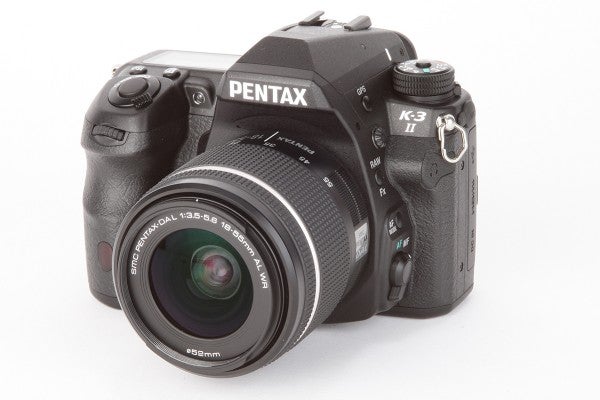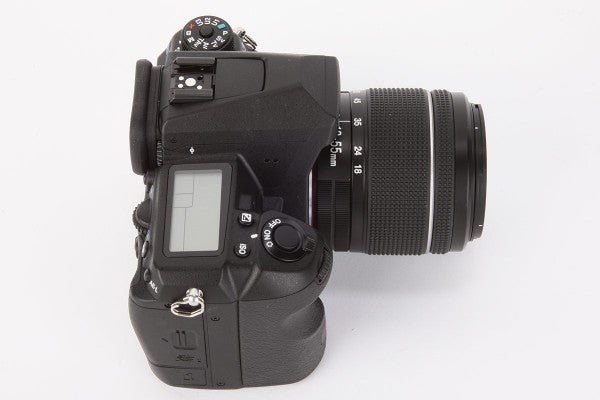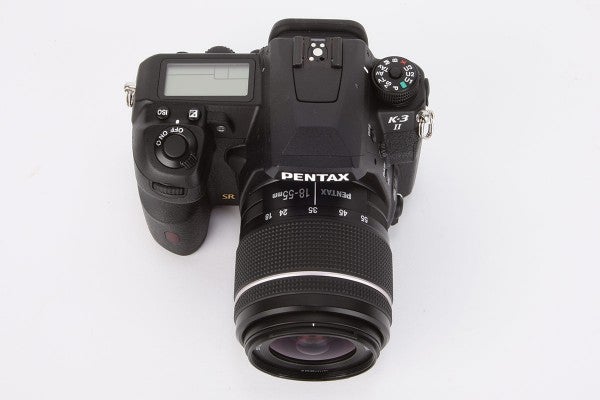The Pentax K-3 II aims to improve on the K-3 with better continuous autofocusing, in-body image stabilisation and never before seen features like Pixel Shift Resolution and Astrotracer. Callum McInernery-Riley investigates
Pentax K-3 II Review
Build and Handling

The K-3 was praised for its design, and the K-3 II continues in that tradition
One of the Pentax K-3 II’s standout features is its high-quality body design. Dust- and weather-sealed using 92 special sealing parts, it’s among the most rugged of all APS-C DSLRs and it claims a working temperature range between -10°C and 40°C.
Pentax also has a large range of weather-sealed lenses to match the K-3 II, which include the numerous kit lens options that come with the camera.
The body’s construction consists of a metal chassis with a magnesium-alloy shell, which is strong but not overly heavy. Weighing 800g with the battery and card, it’s 125g heavier than the Nikon D7200, which has a similar construction and level of weather-sealing.
At 131.5×102.5×77.5mm, the K3 II is a large camera, and, due to its stabilisation system, the depth from the front to the LCD is much longer than many DSLRs. Furthermore, the grip is 72mm from back to front, making it one of the deepest available. It certainly feels large in hand.
This large depth and grip mean that your hand feels stretched around the camera, rather than loosely curled around the grip.

You can see the deep grip, which makes the K-3 II comfortable to hold
This isn’t necessarily a bad thing: its snug fit and finger-shaped grooves allow your middle finger to sit perfectly inside the deep recess under the shutter button and make it feel like it’s designed to fit into your hand – giving it a very different handling experience to other DSLR cameras.
However, while the majority of photographers will really like it, I found it took some time to get used to, and it felt awkward after the more traditional, looser grips of other enthusiast DSLRs.
One of the strengths of the Pentax K3 II is the sheer number of buttons for changing different shooting settings, which cover everything a user is likely to need for a day’s shooting. It’s a more comprehensive set of controls than Nikon or Canon, the K3 II’s direct competitors.
There’s a designated button for everything you could wish for including AF/MF, AF Mode, metering, GPS on/off, white balance, ISO, exposure compensation and more. The camera’s on/off button is located above the grip, allowing you to turn the device on and off quickly with one hand.

Photographers who prefer physical controls will find a lot to like about the K-3 II
Most of the buttons are logically placed and easy to press but I found that the ISO button was positioned awkwardly to the right of the exposure-compensation dial, making it difficult to adjust with my eye to the camera.
Also worth noting for left-eyed shooters, the back scroll wheel is located close to the bridge of your nose, which can be annoying.
With its bright colours and numbers, the Pentax menu system is unlike any other – it looks closer in design to a sat-nav menu than other camera menus. Once you become acquainted with it, however, it’s really easy to follow and all your settings are clearly displayed on the LCD.
While it doesn’t have the simplicity offered by the Canon or Nikon menu system, it does allow for great customisation of settings and is perfect for the more discerning enthusiast who’s more likely to use this camera anyway.
A slight bugbear I have is that with all the settings on the rear status display, it would have been more intuitive to tap a button and change settings from the LCD, selecting an option using the directional controller and turning the scroll wheel to change it. This isn’t possible; instead users have to use the buttons on the camera to change settings.




